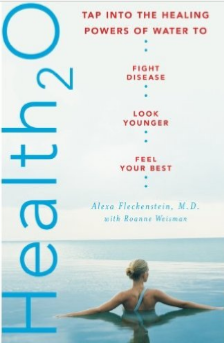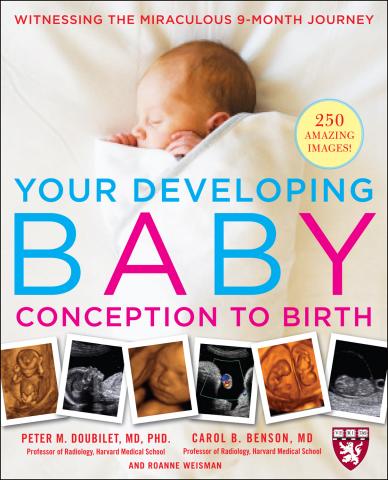Category Archives: Uncategorized
The Little Bird
Filed under Uncategorized
Tempting Snacks That Your Body Will Love©

A doughnut or croissant in the morning tastes delicious, but the white flour and sugar are sending your body an urgent message: “Blood sugar on board; send insulin quickly!” Sugar and flour are simple carbohydrates, ending up in your bloodstream within a few minutes. Your pancreas senses the dangerously high blood sugar and releases insulin to pull the sugar (glucose) out of the blood and send it to other cells of the body to be used or stored as energy. Because high sugars are so dangerous, your body always sends in too much insulin, and this big insulin spike is followed by a deep plunge in blood sugar levels to below normal. Low blood sugar (hypoglycemia) makes you tired and jittery, craving another sugary snack, like that chocolate muffin during the 3:00 PM office munchie attack.
Restoring Order to Post-Traumatic Stress
As the horror of April 15th recedes from the national news, we in Boston are still in shock from the senseless results of evil. It seems as if everyone in this city and surrounding areas is joined in a caring network of personal connections and we are all feeling a kind of Post-Traumatic Stress Disorder (PTSD), similar to warfighters back from combat. Continue reading
Filed under Healing, Health, mental health, Uncategorized
Stress and Disease: An Important Connection
I heard a fascinating radio interview today with Dr. Ester Sternberg, a rheumatologist, researcher, and author of “The Balance Within,” a book about the ways in which the brain, mind, and body interact. I completely agree that our minds, brains,and bodies are intimately connected: When the mind perceives something as stressful, a cascade of hormones, such as cortisol and adrenaline, are released. This is useful when you need to slam on your brakes to avoid a collision, but harmful if these hormones are not “switched off” when the stressful situation is over. Stress hormones flooding your body for days or weeks at a time depress your immune system, leaving you more open to disease. In the interview, Dr. Sternberg clearly explained the biochemistry underlying the connection between stress and disease.
All the more reason to practice yoga, Tai chi, and meditation and try to reduce the sources of stress in our lives! I must always add, of course, that if one is ill, it is important to recognize that certain diseases are simply beyond our control, and NOT to feel a sense of “failure” about somehow having the “wrong” state of mind. At the same time, there is always hope and the possibility of becoming whole, and living fully in every moment.
This is an excerpt from an article that Dr. Sternberg wrote on the subject with Philip W. Gold.
The brain and the immune system continuously signal each other, often along the same pathways, which may explain how state of mind influences health The belief that the mind plays an important role in physical illness goes back to the earliest days of medicine. From the time of the ancient Greeks to the beginning of the 20th century, it was generally accepted by both physician and patient that the mind can affect the course of illness, and it seemed natural to apply this concept in medical treatments of disease. After the discovery of antibiotics, a new assumption arose that treatment of infectious or inflammatory disease requires only the elimination of the foreign organism or agent that triggers the illness. In the rush to discover antibiotics and drugs that cure specific infections and diseases, the fact that the body’s own responses can influence susceptibility to disease and its course was largely ignored by medical researchers.
Filed under Healing, Health, mental health, stress, Tai Chi, Uncategorized, Yoga
Foxglove: History and Medicinal Uses
There has been a great deal of interest on this blog lately about the foxglove plant, so I asked herbal expert and integrative physician Alexa Fleckenstein, M.D., to give us some background. Here is what she wrote:
Foxglove is a beautiful plant in the garden – it likes a moist soil. The pinkish bells on graceful spikes cheer me up. Moreover, it self-seeds when it likes its home – carefree summer joy. It seems.
Foxglove is also one of the deadliest plants when ingested. The powerful medication digitalis has been derived from the plant to help ailing hearts. The story goes that William Withering (1741-1799) became aware of people self-medicating the “dropsy” (body swelling from what we now call congestive heart failure) with this plant; he then searched for the “active” ingredient and found it in digitalis.
Digitalis is safer than the mother plant because in a plant it is difficult to gauge the poisonous quantity the patient is ingesting. Even with digitalis, we physicians rely on a blood test to tell us whether the patient is receiving a safe dose. We say the therapeutic margin is narrow – which means it is but a small step between digitalis helping the heart and digitalis killing the patient.
For these reasons, I would not recommend adding foxglove into your home herb chest. Better to rely on herbs that are safe. With my patients I rely on herbs that have a large therapeutic margin. It is close to impossible to kill yourself with peppermint, for instance (don’t try at home – because, as Paracelsus knew, every single agent in the world can become poisonous if we ingest a large enough dose of it; sugar is a prime example; even water!).
How do we know an herb is safe? Often, they have been tested through centuries or millenniums of use. One person who developed a list of about one hundred safe herbs was Sebastian Kneipp (1821-1897). Better known for his “cold water cure,” Kneipp had learned about plants from his mother, who was the herbalist of the little village in Bavaria where he grew up. He tried to get away from the cold water (a long story, which I will tell you another time!), and therefore systematically searched for herbs that people could use for themselves, experimenting on himself for safety. Nowadays, science has better tools to examine an herb. Of the about one hundred herbs Kneipp had deemed safe, only abut three were removed from the list by the famous Commission E (which studies herbs for safety and efficacy in Germany).
The “safe” herbs can – and should – be used for everybody. And they should be taken whole – in a reputable tincture or a tea – and not manufactured and put into a pill. Because the plants have evolved with us over millions of years; their biochemistry fits into our physiology like a key in its lock. The many different compounds of a plant work in “synergy” (all for the same purpose – or: The sum is more than its parts. If you are interested in herbal synergy, I have written about it in my book).
Beautiful as it is, foxglove is an example of an unsafe plant – it belongs only in the hands of an experienced herbalist or your doctor. So content yourself with admiring the lovely foxglove flowers, and make yourself a nice cup of soothing herbal tea. Try lemon balm!
More about “the power of the flower.”
Filed under Health, heart arrhythmia, Herbs, Sebastian Kneipp, Uncategorized, Water
Cold Water for Babies?
Rose asks an interesting question about whether to use cold water for babies. Here is an answer from Alexa Fleckenstein, M.D., my cold water expert and the author of Health 2 0:
Dear Rose,
Yes, you can apply cold water to babies. This is done in the tradition of European Natural Medicine to raise strong, robust children.
When my son was four months old, I started him. I filled his little pink tub with cold water, cradled the naked baby in my hands and very quickly dunked him in—but not his head. It took a second or so. For babies, the head always stays outside the water.
He took a deep gasp but never cried. He was so astonished about what had happened and so busy with thinking that he never had time to protest.
Can’t remember when I stopped it – but certainly I would not force a protesting toddler under cold water.
Now that our son is a young man, he follows the family tradition and ends each warm shower with a cold one, and he has become a healthy outdoorsman.
Tell us how your baby likes it!
Alexa Fleckenstein M.D.
You can see all comments on this post here:
Filed under children's health, cold shower health benefits, Healing, Health, Uncategorized, Water
Grand Rounds is up
This week’s Grand Rounds is hosted by Dr. John Crippen, who writes about “the pleasures and pitfalls of family medicine in the modern British National Health Service.” I am honored that he has chosen to include my post.
Filed under Uncategorized
Yoga for PTSD in a Military Hospital
How progressive of the US military to use yoga as a treatment for soldiers returning from Iraq with post-traumatic stress disorder. As reported in the May 6 Washington Post, the Specialized Care Program at Walter Reed Army Medical Center focuses on helping service members returning from Iraq and Afghanistan cope with the flashbacks and nightmares typical of post-traumatic stress disorder, which affects 20 percent of the approximately 1.6 million U.S. military personnel who have served in Iraq or Afghanistan, according to a Rand study released last month. The program uses a guided meditation technique called yoga nidra, which I know from personal experience to create a profound state of relaxation.
Filed under Healing, Health, mental health, Uncategorized, Yoga
Treatment for Mental Illness: Finding Balance
While we are talking about mental health, I have just read an amazing story of Duane Sherry’s intervention to help his son recover from a frightening psychotic disorder that he reports was caused by psychiatric medication. The story appears in an article on Bloomberg.cm, about overuse of psychiatric medicines for children. Mr. Sherry replaced the drugs with alternative methods and now, two years later, his son is free of all symptoms and medication. In an e-mail, Mr. Sherry commented to me that “I simply believe in the body’s own ability to heal, and that in the case of ‘mental illness’ there may be something that is out of balance in the body and not functioning correctly. This might be the thyroid, a candida or yeast infection, food absorption difficulties, lyme disease, sensitivities or allergies to various foodsor chemicals.. Whatever it is, it may be getting in the way of healthy mental function. In addition, of course there is abuse and neglect and trauma which may need to be taken into account in the treatment of mental illness. But, any sane person can see that locking people up against their will, and/or forcing them to take large amounts of mind-altering drugs is not the solution. If we had done this with my son, I believe we would have lost him.”
Filed under Healing, mental health, Uncategorized






